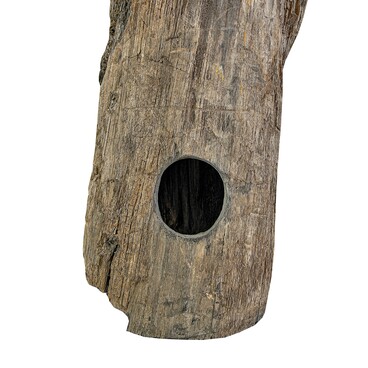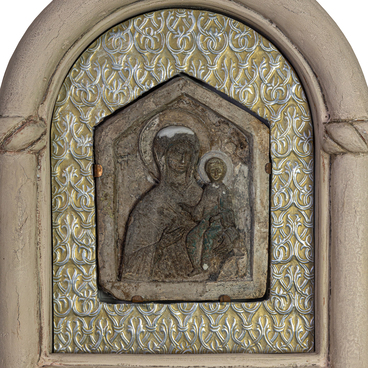Sergius of Radonezh is the Orthodox saint, one of the most revered in Russia. He founded the Holy Trinity Monastery, which later became the Trinity Lavra of St. Sergius. Since the 15th century, he has been revered by the Russian Orthodox Church as a venerable saint who performed a monastic heroic deed.
Sergius of Radonezh acted as a wise politician: he sought to reconcile the warring princes and unite the Russian lands. In 1366 he resolved the princely family dispute over Nizhny Novgorod, in 1387 he achieved reconciliation of Ryazan and Moscow.
“In order to understand Russia, one must understand the Lavra, and in order to understand the Lavra, one must carefully look at its founder, ” wrote the priest Pavel Florensky at the beginning of the 20th century.
The icon from the collection of the Sergiev Posad Museum-Reserve was created presumably at the end of the 17th — beginning of the 18th century. The image of St. Sergius of Radonezh was painted on a cypress board. The saint was depicted waist-length. Over the Miracle Worker, the Holy Trinity was presented in the version of the “Fatherland” — with God the Father, God the Son and God the Holy Spirit as a dove.
Initially, the icon was located in a small “wooden carved gilded iconostasis behind the mica”. It has not survived to this day. The document from the monastery archive informs that in the Trinity Cathedral “this image is placed on the lectern opposite the right coir gallery; the image was brought from St. Petersburg by the Most Reverend Father Superior Archimandrite Varlaam in December 1734, in the month of December.” The icon is painted in the new traditions of light-and-dark painting, which appeared in Russian icon painting in the second half of the 17th century. The images on such icons are closer to realistic than the early samples.
The Miracle Worker was depicted with a blessing gesture of his right hand and a scroll of the precepts to the Brotherhood in his left hand. Thick gaps emphasize the volume of wavy hair and a lush beard. The image was supplemented with a precious casing. On the gilded frame, the masters engraved an elegant floral pattern, and on plain background in large font — the name of the icon. The golden crown was decorated with three bright enamels with images of the Savior Not Made by hands in the center, and on the sides — the Crucifixion and the Resurrection of Christ. 60 diamonds were placed along the edges of the halo. All details of the casing were encircled by strings of large pearls.
Sergius of Radonezh acted as a wise politician: he sought to reconcile the warring princes and unite the Russian lands. In 1366 he resolved the princely family dispute over Nizhny Novgorod, in 1387 he achieved reconciliation of Ryazan and Moscow.
“In order to understand Russia, one must understand the Lavra, and in order to understand the Lavra, one must carefully look at its founder, ” wrote the priest Pavel Florensky at the beginning of the 20th century.
The icon from the collection of the Sergiev Posad Museum-Reserve was created presumably at the end of the 17th — beginning of the 18th century. The image of St. Sergius of Radonezh was painted on a cypress board. The saint was depicted waist-length. Over the Miracle Worker, the Holy Trinity was presented in the version of the “Fatherland” — with God the Father, God the Son and God the Holy Spirit as a dove.
Initially, the icon was located in a small “wooden carved gilded iconostasis behind the mica”. It has not survived to this day. The document from the monastery archive informs that in the Trinity Cathedral “this image is placed on the lectern opposite the right coir gallery; the image was brought from St. Petersburg by the Most Reverend Father Superior Archimandrite Varlaam in December 1734, in the month of December.” The icon is painted in the new traditions of light-and-dark painting, which appeared in Russian icon painting in the second half of the 17th century. The images on such icons are closer to realistic than the early samples.
The Miracle Worker was depicted with a blessing gesture of his right hand and a scroll of the precepts to the Brotherhood in his left hand. Thick gaps emphasize the volume of wavy hair and a lush beard. The image was supplemented with a precious casing. On the gilded frame, the masters engraved an elegant floral pattern, and on plain background in large font — the name of the icon. The golden crown was decorated with three bright enamels with images of the Savior Not Made by hands in the center, and on the sides — the Crucifixion and the Resurrection of Christ. 60 diamonds were placed along the edges of the halo. All details of the casing were encircled by strings of large pearls.



